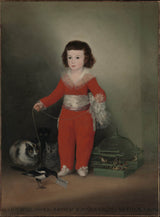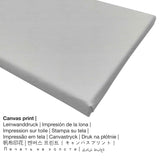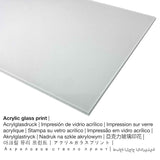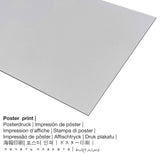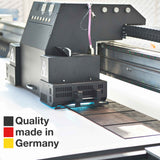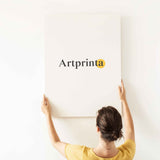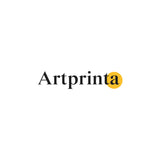Goya, 1787 - Manuel Osorio Manrique de Zuñiga (1784-1792) - mbipụta nka mara mma.
Ụtụ gụnyere. Mbupu gbakọrọ na ndenye ọpụpụ.
Nchịkọta ngwaahịa ebipụta nka ochie
Manuel Osorio Manrique de Zuñiga (1784-1792) bụ ọrụ nka nke nwoke na-ese ihe sere Goya. Ihe nka nwere nha nke a: 50 x 40 n'ime (127 x 101,6 cm) ma were ihe osise ese Usoro of mmanụ na kwaaji. The artwork belongs to the The Metropolitan Museum of Art's art collection located in New York City, New York, United States of America. We are delighted to mention that this ngalaba ọha piece of art is being included with courtesy of The Metropolitan Museum of Art, New York, The Jules Bache Collection, 1949. Moreover, the work of art has the creditline: Nchịkọta Jules Bache, 1949. N'elu nke ahụ, nhazi nke mmepụta dijitalụ dị na eserese format ya na oke nke 3: 4, nke pụtara na ogologo bụ 25% mkpụmkpụ karịa obosara.
Họrọ nhọrọ akụrụngwa gị
Nchịkọta nhọrọ ndetu ngwaahịa na-enye gị ohere ịhọrọ ngwa na nha dabere na mmasị gị. Ka ị kwekọọ n'ihe ị chọrọ nke ọma, ị nwere ike họrọ n'ime nhọrọ nhazi ngwaahịa ndị a:
- Mbipụta ọla (aluminium dibbond): Aluminium Dibond prints are metal prints with a true depth effect, which creates a contemporary impression by having a surface structure, which is non-reflective. The Direct Print on Aluminum Dibond is your best start to fine art replicas produced on aluminum. For your Print On Aluminum Dibond, we print the artpiece onto the aluminium composite white-primed surface.
- Kwaaji: A printed canvas, which shall not be confused with an artwork painted on a canvas, is a digital replica applied on a canvas fabric. The great advantage of canvas prints is that they are relatively low in weight. That means, it is easy to hang up your Canvas print without the help of extra wall-mounts. A canvas print is suited for any type of wall.
- Mpempe akwụkwọ ederede (akwa akwa akwa): Our poster print is a printed canvas paper with a granular surface texture. It is used for placing your art replica in a personal frame. Please note, that depending on the absolute size of the poster print we add a white margin 2-6cm around the print, which facilitates the framing with a custom frame.
- Mbipụta enyo acrylic: The acrylic glass print, often named a print on plexiglass, transforms the original artwork into décor and is a great alternative to dibond or canvas prints. Your work of art will be printed with the help of modern UV direct print machines.
Ederede iwu: We try all that we can in order to depict our products as clearly as it is possible and to exhibit them visually on the respective product detail pages. Please keep in mind that some pigments of the printed materials and the printing may diverge slightly from the representation on your device's screen. Depending on the screen settings and the condition of the surface, color pigments may not be printed as realisitcally as the digital version. Since our fine art prints are printed and processed manually, there might also be slight variations in the size and exact position of the motif.
Ozi ederede ahaziri
| Nkewa edemede: | ọmarịcha nka |
| Usoro mmeghari: | dijitalụ mmeputakwa |
| Usoro nhazi: | Mbipụta UV / dijitalụ |
| Mmalite nke ngwaahịa a: | emere na Germany |
| Stockdị ngwaahịa: | na mmepụta ihe |
| Ihe eji eme atụmatụ: | mgbidi mgbidi, ihe ndozi ụlọ |
| Nhazi onyonyo: | usoro eserese |
| Oke akụkụ: | ogologo ruo obosara 3: 4 |
| Nkọwa: | ogologo bụ 25% mkpụmkpụ karịa obosara |
| Nhọrọ akwa: | ígwè obibi akwụkwọ (aluminium dibond), akwụkwọ mmado (akwụkwọ kwaaji), mbipụta enyo acrylic (nke nwere ezigbo mkpuchi iko), mbipụta akwụkwọ. |
| Mpempe akwa akwa (akwa akwa na etiti ihe ndọtị) nha: | 30x40cm - 12x16", 60x80cm - 24x31", 90x120cm - 35x47", 120x160cm - 47x63" |
| Mpempe iko acrylic (nwere ezigbo mkpuchi iko) nha dị iche iche: | 30x40cm - 12x16", 60x80cm - 24x31", 90x120cm - 35x47" |
| Nhọrọ nha nke akwụkwọ mmado (akwụkwọ kwaaji): | 30x40cm - 12x16", 60x80cm - 24x31", 90x120cm - 35x47" |
| Mbipụta nke aluminom: | 30x40cm - 12x16", 60x80cm - 24x31", 90x120cm - 35x47" |
| Nhazi mbipụta nka: | agunyeghi |
Data ndabere gbasara nka
| Aha nke eserese ahụ: | Manuel Osorio Manrique de Zuñiga (1784-1792) |
| Nhazi: | sere |
| Okwu mkpokọta: | nka ochie |
| oge: | 18th narị afọ |
| Emepụtara na: | 1787 |
| Ogologo afọ nka nka: | ihe karịrị 230 afọ |
| Agba na: | mmanụ na kwaaji |
| Nha izizi: | 50 x 40 n'ime (127 x 101,6 cm) |
| Ụlọ ihe ngosi nka / ebe: | Museumlọ ihe ngosi nka nke Obodo |
| Ebe ngosi nka: | New York City, New York, Njikota Obodo Amerika |
| Weebụsaịtị nke ihe ngosi nka: | Museumlọ ihe ngosi nka nke Obodo |
| Ikikere nke ihe osise: | ngalaba ọha |
| Site n'aka: | Ụlọ ihe ngosi nka nke Metropolitan, New York, mkpokọta Jules Bache, 1949 |
| kreditline ọrụ nka: | Nchịkọta Jules Bache, 1949 |
Ose okwu
| aha: | Goya |
| okike onye nka: | nwoke |
| Nationality: | spanish |
| Ọrụ: | onye na-ese ihe |
| Obodo onye nka: | Spain |
| Otu nka: | nna ukwu ochie |
| Oge ndu: | 82 afọ |
| Amụrụ n'afọ: | 1746 |
| Afọ nwụrụ: | 1828 |
© Nwebiisinka nke | Artprinta (www.artprinta.com)
What does the The Metropolitan Museum of Art state about the 18th century work of art painted by Goya? (© Nwebiisinka - nke Ụlọ ihe ngosi nka nke Obodo ukwu - Museumlọ ihe ngosi nka nke Obodo)
Portraits of children accompanied by animals have a long tradition in Spanish painting. Outfitted in a splendid red costume, the young boy, the son of the Count and Countess of Altamira, is shown with a pet magpie (which holds the painter's calling card in its beak), a cage full of finches, and three wide-eyed cats. Although they add an engaging element for the viewer, Goya may have intended them as a reminder of the frail boundaries that separate the child's world from the forces of evil, or as a commentary on the fleeting nature of innocence and youth. Manuel died at the tender age of eight.

